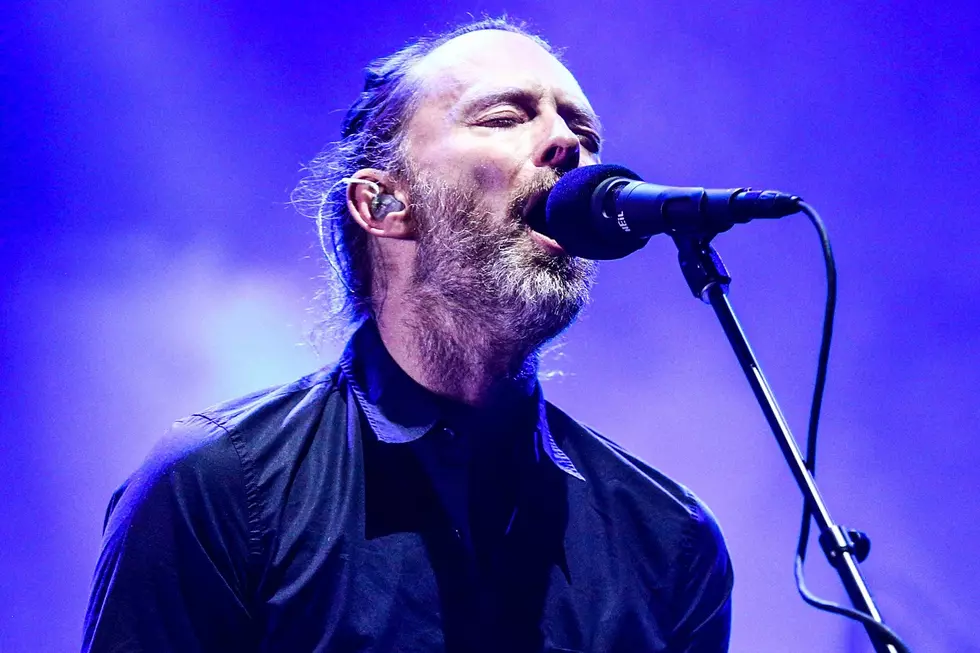
5 Reasons Rage Against the Machine Should Be in the Rock and Roll Hall of Fame
It's ironic that the legacy of Rage Against the Machine, a band animated by strident left-wing political convictions, is one that can be loosely described borrowing obscure capitalist economist Frédéric Bastiat's signature watchword, "the seen and the unseen."
What's seen, most transparently, when reflecting on the rap-metal boom of the late-'90s is a largely regrettable batch of inauthentic machismo that ought to have been recalled before reaching rock radio's dietary consumption. It's a passing fad that Rage Against the Machine not only unfairly gets lumped in with, but branded with popularizing, if not founding, the entire movement.
This association isn't merely a case of factual misjudgment, but it also obscures what separates—what has always separated—Rage Against the Machine from the posturing of the likes of Kid Rock and Limp Bizkit. Moreover, it overlooks what makes the Los Angeles band's nine-year career a triumph on its own merits. The pioneering aspects of Rage Against the Machine's phenomenal originality, their revolutionary instrumentation and their formidable live show don't simply elevate them above the trends a bygone era, but heightens their significance in rock history.
What's in order is a rounded case for Rage Against the Machine's induction into the Rock and Roll Hall of Fame...
Guitar Ingenuity
Rage's admiration for hip-hop wasn't limited to frontman Zack de la Rocha's style of emceeing. Among Tom Morello's many innovative experiments with effects, employing technical trickery to emulate the sound of turntable scratches pushed the band's sonic palette and rendered Morello a guitar hero for his generation. But that's far from Morello's only signature move. The guitarist noticeably wears his guitar high so as to more efficiently manage every little idiosyncrasy that emanates from from his axe.
Rock and Roll Renegades
While it's true that the convergence of rap and heavy metal had its day in the latter part of the '90s, when Rage Against the Machine formed in 1991, the two styles had largely remained segregated. Save for one-offs such as Anthrax's collaboration with Public Enemy on their "Bring the Noise" banger, the genre was largely an untapped niche. The wired four-piece's hodgepodge of influences containing punk rock, thrash metal, hip-hop, glam and classic rock made for a sonic ferocity that didn't take long to incinerate Los Angeles airwaves like wildfire.
Rage on Parade
A rock band of Rage Against the Machine's ilk measures their live performance by the risk for a riot breaking out. And by this metric, Rage receives high marks. Although their rise to stardom was surprisingly fast, and thus the size of their venues tended to necessitate barricades between the stage and audience, this hardly managed to temper their fans' eruptive responses. Even while performing under the generally controlled conditions of a festival set, observing the dynamic between Rage and their crowd gave an idea what a sea of thousands of, say, Minor Threat fans would have looked like, had the '80s hardcore band reached a similar level of commercial success.
Hip-Hop in the Beats, Punk Rock on the Streets
Not since punk's first recognized wave in 1977 had the rock world seen a band so comfortable speaking their mind and causing trouble. Unabashedly outspoken in their views, with which one can agree or disagree, it'd be difficult to say it wasn't viscerally refreshing seeing a band express themselves in any manner they saw fit. While their rap-rock contemporaries like Limp Bizkit were collecting awards, Rage Against the Machine were causing ruckus. Literally: Rage bassist Tim Commerford climbed the VMA stage scaffolding in protest of Limp Bizkit receiving the award for Best Rock Video.
Sleep Now in the (Still Kindled) Fire
The impact of Rage Against the Machine's oeuvre is magnified by its stark brevity. When Zack de la Rocha announced his departure in 2000, followed by the band's dissolution, it felt startlingly premature. The band had put forth merely three albums of original material (2000's Renegades was composed of all covers) and had just been nominated for their fifth and sixth Grammy awards. Rage briefly reemerged for a reunion tour years later and found themselves recipients of Kerrang!'s Hall of Fame Award and NME's Heroes of the Year in 2008 and 2010, respectively. Any band that inspires this degree of reverence for such a limited tenure is a serious contender for induction to the Rock and Roll Hall of Fame.
More From Diffuser.fm









